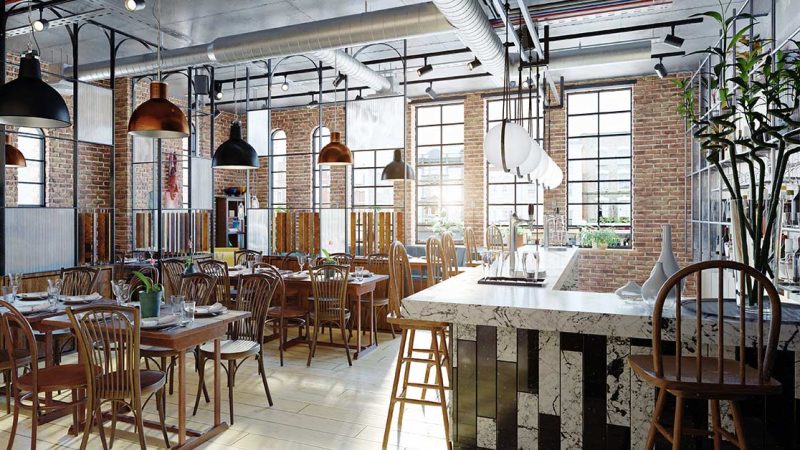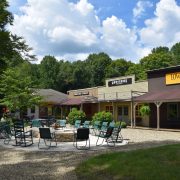Leasing a restaurant space is one of the most important steps in starting or expanding a restaurant business. The right location can attract customers, boost revenue, and define your brand, while the wrong space can lead to financial struggles and business failure.
Finding the perfect restaurant space requires careful planning, negotiation, and understanding of lease agreements. Whether you’re a first-time restaurant owner or an experienced restaurateur, this guide will walk you through the step-by-step process of leasing a restaurant space successfully.
In this guide, you’ll learn:
- How to lease a restaurant space
The key terms and clauses in a restaurant lease
How to negotiate the best lease deal
Important legal considerations before signing a lease
Common mistakes to avoid when leasing a restaurant space
Let’s dive into the essential steps to leasing a profitable restaurant space!
Determine Your Restaurant’s Needs
Before searching for a restaurant space, define your business goals and requirements:
- Type of restaurant – Fine dining, fast-casual, café, food truck, etc.
Size of space – How many seats do you need? What’s your kitchen space requirement?
Budget – Set a clear budget for rent, utilities, and operating costs.
Target customer base – Who are your ideal customers, and where do they dine?
Tip: A small café may only need 500–1,500 sq. ft., while a full-service restaurant might require 3,000+ sq. ft.
Choose the Right Location
Location is one of the biggest factors in a restaurant’s success. Consider:
- Foot traffic – Are there enough potential customers passing by?
Parking & accessibility – Is the space easy to find and reach?
Demographics – Does the local population match your target market?
Competition – Are there too many similar restaurants nearby?
Zoning laws – Ensure the location is legally zoned for restaurant use.
Example: A coffee shop benefits from high foot traffic near offices, while a fine-dining restaurant thrives in a high-income neighborhood.
Tip: Research your competitors’ locations to find profitable gaps in the market.
Find Available Restaurant Spaces
To find the best restaurant spaces for lease:
- Work with a commercial real estate agent – They specialize in restaurant leases and can negotiate deals.
Search online listings – Websites like LoopNet, Craigslist, and CoStar list commercial properties.
Network with landlords and brokers – Some properties are leased before they even hit the market.
Look for second-generation restaurant spaces – These locations already have kitchen infrastructure, saving thousands in renovation costs.
Tip: Consider leasing a turnkey restaurant—a fully equipped space that minimizes startup costs.
Understand Key Lease Terms & Costs
A restaurant lease agreement is legally binding, so it’s important to understand key terms:
Base Rent
- The fixed monthly rent for the space.
Average restaurant rent should be 6-10% of gross revenue.
Triple Net Lease (NNN)
- The tenant pays for rent, property taxes, insurance, and maintenance costs.
Common in shopping centers and malls.
Percentage Rent Clause
- Some landlords charge a percentage of restaurant sales on top of base rent.
Example: 5% of gross sales exceeding $500,000/year.
Lease Term & Renewal Options
- Typical restaurant leases last 5–10 years.
Look for renewal options to extend the lease if your business succeeds.
Tenant Improvement (TI) Allowance
- Landlords may provide funds for renovations and upgrades.
This helps cover the cost of kitchen equipment, ventilation, plumbing, and decor.
Example: If rent is £4,000/month, make sure your projected revenue is at least £40,000/month (10x rent).
Tip: Hire a real estate attorney to review lease terms before signing.
Negotiate the Best Lease Deal
Negotiating a restaurant lease can save you thousands over the long term.
Tips for Negotiating a Restaurant Lease
- Ask for free rent – Negotiate for 1–3 months of rent-free occupancy to set up your restaurant.
Cap property expenses – Ensure maintenance and property tax increases have a maximum limit.
Negotiate rent escalation – Limit annual rent increases to 2-3% instead of market-based rates.
Secure an exclusivity clause – Prevents the landlord from renting to a direct competitor nearby.
Get a termination clause – Allows you to exit the lease early if sales fall below a certain level.
Request tenant improvement funds – The landlord may pay for part of your buildout costs.
Clarify who handles repairs – Ensure HVAC, plumbing, and structural repairs are the landlord’s responsibility.
Tip: If possible, negotiate a shorter lease term (3–5 years) with renewal options to reduce long-term risk.
Get Necessary Permits & Licenses
Before opening, ensure your restaurant lease allows you to get the required:
- Business license – Required to operate legally.
Health & safety permits – To comply with food industry regulations.
Liquor license – If serving alcohol.
Fire & building permits – To ensure the location is safe and up to code.
Tip: Some restaurant spaces already have permits, making the leasing process faster.
Avoid Common Mistakes When Leasing a Restaurant
Costly Mistakes to Avoid
- Not reading the lease agreement carefully – Always review legal terms with an attorney.
Overpaying for rent – Ensure rent is no more than 10% of projected sales.
Skipping due diligence – Inspect the property for plumbing, ventilation, and structural issues.
Forgetting about hidden costs – Budget for utilities, insurance, maintenance, and taxes.
Choosing the wrong location – A great restaurant in a bad location can fail.
Not securing exclusivity – Ensure competitors can’t open nearby.
Underestimating renovation costs – Kitchen upgrades can cost thousands—get a cost estimate upfront.
Tip: Always negotiate lease terms before signing—landlords expect negotiations!
Conclusion
Leasing a restaurant space is a major investment, but choosing the right location, negotiating smartly, and understanding lease terms can set you up for long-term success.
Key Takeaways:
- Choose a high-traffic location that fits your target market.
Negotiate lease terms to get the best deal on rent and expenses.
Understand key clauses like rent increases, tenant improvements, and exclusivity.
Ensure permits & licenses are secured before signing a lease.
Avoid costly mistakes by budgeting for hidden costs and legal fees.
Ready to open your dream restaurant? Follow these steps to lease the perfect space and start your culinary journey today!
FAQs
1. How much should I budget for restaurant rent?
Rent should be 6-10% of your projected gross sales.
2. Can I negotiate a lower rent for my restaurant lease?
Yes! Always negotiate free rent, caps on expenses, and tenant improvement funds.
3. What lease term is best for a restaurant?
A 3–5 year lease with renewal options is ideal for reducing long-term risk.
4. What is a triple-net (NNN) lease?
In an NNN lease, tenants pay rent plus property taxes, insurance, and maintenance.
5. Should I hire a real estate agent for a restaurant lease?
Yes! A commercial real estate agent can find better locations and negotiate the best deal.
Also read: Engineering Analysis: A Complete Guide to Its Importance and Applications









